Lessico
Bromus
Dal greco brómos, avena, avena selvatica, a sua volta dal verbo brémø, fremere, rumoreggiare. Bromus: genere di piante della famiglia Graminacee che comprende Bromus erectus, detto bromo dei prati o cimmino, e Bromus sterilis, noto con il nome di forasacco.
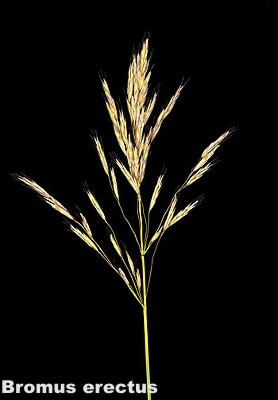
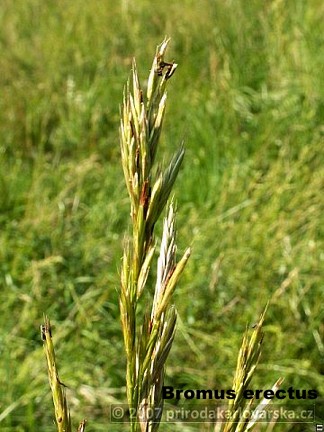
Bromus is a large genus of the true grass family (Poaceae). Estimates in the scientific literature of the number of species have ranged from 100 to 400, but plant taxonomists currently recognize around 160-170 species . They are commonly known as bromes, brome grasses, cheat grasses or chess grasses. Bromus is part of the cool-season grass lineage (subfamily Pooideae), which includes about 3300 species. Within Pooideae, Bromus is classified in tribe Bromeae (it is the only genus in the tribe). Bromus is closely related to the wheat-grass lineage (they are sister taxa) that includes such economically important genera as Triticum (wheat), Hordeum (barley) and Secale (rye), which are all classified in the tribe Triticeae.
Bromus species occur in many habitats in temperate regions of the world, including the Americas, Eurasia, Australia, and Africa. There are considerable morphological differences between some species, while the morphological differences between others (usually those species that are closely related) are subtle and difficult to distinguish. As such, the taxonomy of the genus is complicated. The genus Bromus is distinguished from other grass genera by a combination of several morphological characteristics, including leaf sheaths that are closed (connate) for most of their length, awns that are usually inserted subapically, and hairy appendages on the ovary. The leaf blades and sheaths, which comprise the leaves can be hairless, sparsely hairy or hairy. The inflorescence is a dense or open panicle, usually drooping or nodding, sometimes spreading (as in Japanese Brome, Bromus japonicus).
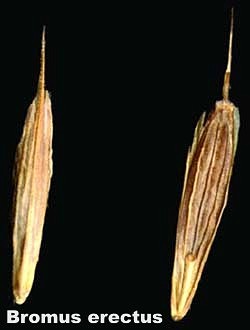
The caterpillars of some Lepidoptera use Bromus as a foodplant, e.g. the Chequered Skipper (Carterocephalus palaemon). Bromus species are generally considered to have little economic value to humans, at least in present times. The Tarahumara Indians in northern Mexico use the grains of some native Bromus species to aid fermentation in making one of their cultural beverages. As names like Bromus fibrosus, Poverty Brome (Bromus sterilis) or Ripgut Brome attest, some species are not very useful as fodder because their leaves sclerotize quickly and may even be harmful to livestock due to the high silica content. Others, such as meadow brome (Bromus riparius), native to parts of Russia, are planted as forage in the Great Plains of North America. Brome grasses are not usually grown as ornamental plants due to most species' nondescript appearance. Some are useful to prevent erosion but such use must be cautiously controlled as most Bromus have the ability to spread, becoming invasive weeds. Cheatgrass (Bromus tectorum) is a particularly troublesome weed across much of western North America (from southern British Columbia to California.)
Taxonomists have generated various classification schemes to reflect the morphological variation that is seen in Bromus. In North America, five morphologically similar groups of species, called sections, are generally recognized: Bromus, Genea, Ceratochloa, Neobromus, and Bromopsis. Sections Bromus and Genea are native to the Old World (Eurasia), but many species are introduced into North America. Sections Bromopsis, Neobromus, and Ceratochloa have several native species in North America.
Bromus sterilis
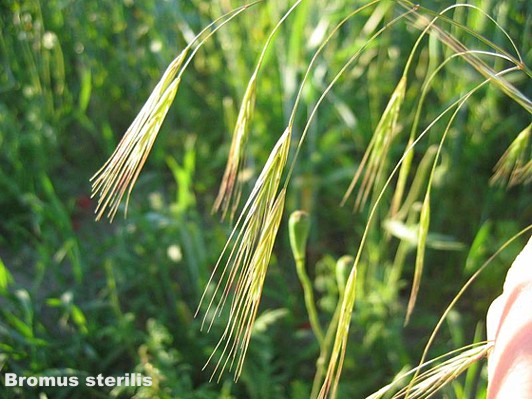
Bromus sterilis is a species of bromegrass known as poverty brome, barren brome, and sterile brome. This grass is native to Eurasia but is well-known in many other parts of the world where it has been introduced. It is a noxious weed on the eastern and western sides of North America. This is an annual grass ranging from about 20 to 90 centimeters in maximum height. It has a small leaf blade and its inflorescence is spreading, with the lower parts drooping more than the upper. The spikelet is up to 3 centimeters long.
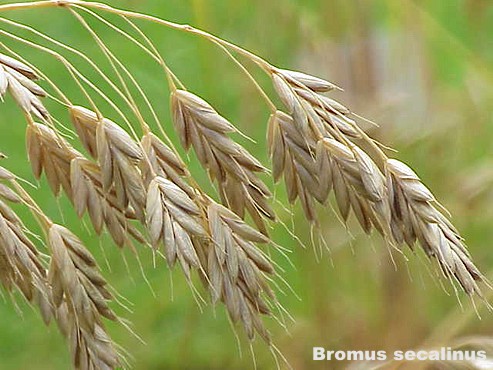
Le nom générique Bromus dérive d'un mot grec, brómos, qui désignait l'avoine. Bromus est le nom d'un genre de plantes herbacées de la famille des Poacées assez communes, comprenant une cinquantaine d'espèces dont certaines sont cultivées comme plantes fourragères. L'une d'elles, le Bromus mango était cultivée comme céréale panifiable par les Indiens Araucans du Chili jusqu'au milieu du XIXe siècle avant d'être remplacée par les céréales européennes. Les bromes ont une inflorescence en panicule plus ou moins lâche ou contractée, formée d'épillets assez grands contenant de nombreuses fleurs (jusqu'à 20)